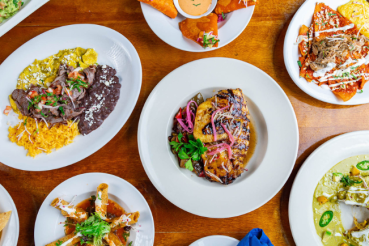As an introvert, I prefer reading a good book, listening to my favorite hip-hop artist or watching a great show on television instead of large gatherings and parties. The irony is that I oversee the Office of Community Health Equity and Engagement at Rush University Medical Center. Our charge is to improve the health of the diverse communities we serve through community partnerships, outreach and education. Community engagement, social cohesion and connections with people are the heart and soul of what we do.
But in the wake of the COVID-19 pandemic, these connections are now done remotely with Zoom meetings, FaceTime and webinars. Human contact has been replaced with blurry videos and staticy audio. We press buttons to mute and unmute ourselves and chat in boxes instead of directly with each other, which makes these connections feel superficial, at best.
Now in the third week of social distancing, I’m beginning to think more about the importance of social connections and how they matter to our overall sense of well-being. More than some esoteric, feel-good ideology, social cohesion is a tangible, researched thing.
Researching social interactions
The Robert Wood Johnson Foundation has made it an integral part of its overall framework to build a culture of health across the country. Like Rush, the Foundation has recognized that communities thrive and people are healthier when neighbors connect directly with each other by sharing meals, planning play dates, running in parks, hosting barbeques and checking in on seniors. This is why social distancing, though necessary, is hard. We feel more alive when we share our days in the company of others. Not by texts, not by webinars, but through in-person conversations — by engaging directly.
Just outside of London, researchers are putting this idea to the test through a large-scale social experiment called Everyone Every Day. The initiative is designed to see if it is possible to build practical community engagement into the fabric of everyday life. It is built from nine years of research that examined how peer-to-peer participation in community events and opportunities can improve social cohesion and community strength. The project measures individual well-being, family impact, increased neighborliness, expanded learning and working, impacts on the environment and other areas.
In the last two years, Everyone Everyday has had 6,000 resident participants; 146 projects, 14,000 attendees and 1,065 individual sessions. There were 34,000 hours of neighbors spending time together. Preliminary findings show that eight out of 10 people reported an increased sense of confidence. Nine out of 10 reported experiencing enjoyment and happiness in the sessions. Nine out of 10 people reported experiencing friendship and social connection in the sessions. Six was the average number of people spoken to from different cultures and backgrounds at each session.
While we may not be in a position to launch a large-scale research project here, we can be more intentional about building connections in our communities. Rush has already made commitments to the West Side of Chicago by investing in community development projects, hiring locally and bringing businesses to West Side neighborhoods. We also volunteer locally through Rush-wide events and have deep connections with community partners and residents. But let’s make a commitment to do more. Let’s build stronger connections and neighborhoods by investing more time in the people who live there. We really are better together.
For me, when this pandemic has passed and life gets back to normal, I’m going to shake off the “introvert” label and fully embrace personal connections – one meal, play date and conversation at a time.



